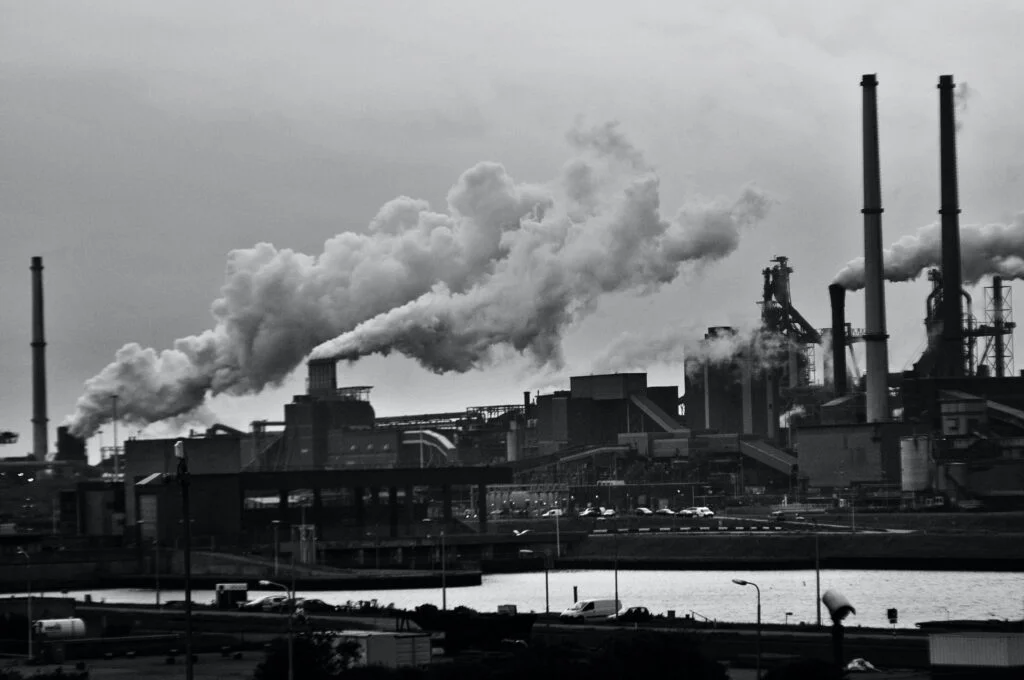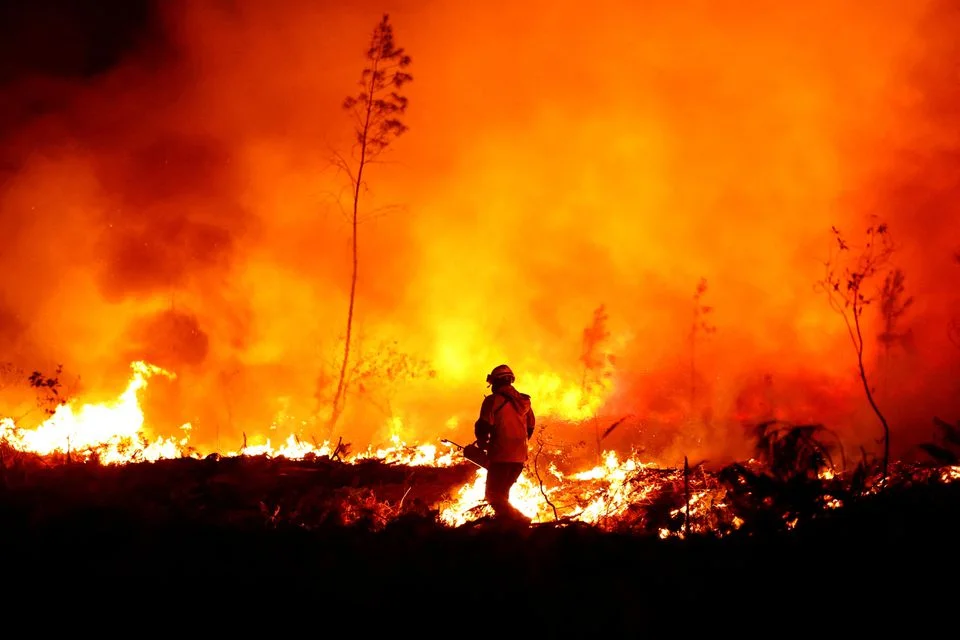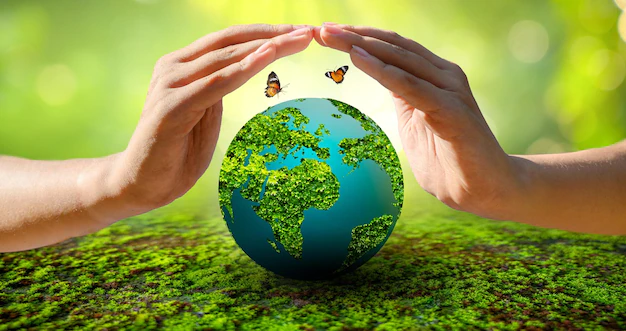Recently, the United Nations General Assembly recognised the right to a clean, healthy and sustainable environment as a universal human right. Human rights are our inherent rights simply because we exist as human beings. Although the concept of human rights emerged after World War II, the right to a clean environment as a human right has had only a minimal priority. Therefore, this historic move is significant in countering the declining clean and healthy environment.

Why is a Clean Environment Necessary?
According to the Lancet Commission on pollution and health, an estimated one in six premature deaths are caused by pollution worldwide. Millions of people are displaced every year by human-induced climate change. Furthermore, the loss of biodiversity threatens the natural architecture of ecosystems. The food we eat, the air we breathe, the water we consume, and our well-being, health and growth entirely depend on a clean and healthy environment.
There is no doubt that a clean, healthy and sustainable environment is a human right. However, international recognition through law and policy provides better conditions for its implementation. In this regard, the UN General Assembly passed a resolution recognising a clean environment as a human right.
Background of the UNGA Resolution
The origin of the UNGA resolution on a clean, healthy and sustainable environment as a human right can be traced back to the Stockholm Declaration of 1972. The Stockholm declaration was the first to call for a quality environment as a fundamental right which can permit a life of dignity and well-being for people. This declaration is significant for putting environmental problems as a top international concern. Moreover, it initiated a consensus among the industrialised and developing nations regarding the link between economic growth and environmental protection.

Further, the next biggest step toward this resolution was the recognition of the Human Rights Council. This came after decades of work done by nations, youth, indigenous people and civil society organisations towards climate crisis mitigation. The Human Rights Council recognised the right to a clean environment in 2021 and elevated its status to ‘universal recognition.’ The council also called for the United Nations General Assembly to do the same.
After the Stockholm declaration, the right was integrated into the domestic laws, constitutions and regional agreements for it to be recognised as a human right by the UN General assembly. Finally, the United Nations General Assembly, on July 28 2022, adopted the historic resolution by recognising the human right to a clean, healthy and sustainable environment as a result of the Stockholm+50 meeting.
Triple Planetary Crisis
We are witnessing the world going into the worst environmental recession in human history. The three primordial causes for this are climate change, pollution and loss of biodiversity. Every human being on the planet contributes, and every living organism is affected by these three issues. Hence collectively, these three issues are known as the Triple Planetary Crisis. Therefore, addressing these pressing issues is the need of the hour for a better planet.
1. Climate Change
One component of the triple planetary crisis is the alarming issue of climate change. In simple terms, climate change is the change in temperatures and weather patterns over a long period. Human activities like burning fossil fuels, mainly coal and oil, are the primary factor behind climate change. Climate change can cause severe droughts, flooding, and rising sea levels. For example, the recent scorching heat waves in Europe result from climate change. Heat waves are becoming severe and recurrent, causing several deaths worldwide because of climate change.
Read more about the heat waves in Europe here!

Image courtesy-Reuters
2. Pollution
Pollution is another global problem where every other human activity becomes its source. According to the WHO report, seven million people die prematurely yearly due to pollution. Delhi has been ranked as the most polluted capital city in the world for four consecutive years by World Air Quality Report. As per estimations, there will be a decrease in the ten years lifespan of Delhites by 2050.

Image courtesy-BBC
3. Loss of Biodiversity
Everything is interlinked in this ecosystem, where biodiversity is the touchstone. Loss of biodiversity will have a direct effect on human health. The biodiversity crisis also indirectly affects livelihoods, income and human migration.

The UN is playing an active role in containing the triple planetary crisis. There are three UN agencies, UN Climate Change, UN Environment and UN Biodiversity, to tackle the respective triple planetary crisis. Upon this, the United Nations General Assembly (UNGA) recognised the right to a clean, healthy and sustainable environment as a universal human right act as brownie points to deal with this crisis.
UN Resolution – Right to Clean Environment as a Human Right
In June 2021, Costa Rica, Maldives, Morocco, Slovenia and Switzerland collectively introduced the text of this resolution to UNGA. The text says that the right to a healthy environment is related to existing international law and asserts the implementation of multilateral environmental agreements. On July 28 2022, UNGA adopted this resolution with recorded 161 votes in favour, 0 against and eight abstentions. Belarus, Cambodia, China, Ethiopia, Kyrgyzstan, Iran, Russia and Syria are the eight states that abstained from the resolution. This historic move helps the states realise their aim of environmental protection.
Implications of the UNGA Resolution
When one analyses the resolution, it becomes more legitimate if it can answer the most important question, what impact can this right create on the planet? This segment is crucial in understanding the international community’s level of working towards a clean environment. This is a move that has the potential to bring all the stakeholders under one umbrella. Moreover, the official legal recognition of the clean, healthy and sustainable environment as a human right acts as a catalyst in bringing change in terms of climate protection.

For example, the UNGA adopted the right to water as a human right in 2010. This is the strongest example of how the UN resolution can influence to shape state policy. It recognised that clean drinking water and sanitation are necessary for realising all other rights. Moreover, this right transformed the accessibility of water in marginalised areas of Mexico, Egypt, Bangladesh, Costa Rica, Fiji, Slovenia, Colombia and France. Hence human rights declarations can be instrumental in shaping state policies. It also acts as a political tool for people to demand better living conditions.
However, affirming our right to the environment through the legal and policy framework is simply not enough. Although the law is not binding on nations, states must implement their international commitments by ratifying them within their national laws. Overall, states must strengthen their efforts for its successful implementation. Otherwise, humanity witnesses its worst environmental crisis if there is no collective action from all the concerned stakeholders. This way, the UNGA resolution has the ability to transform the climate landscape on the planet.

Conclusion
The triple planetary crisis is the worst crisis that the world is witnessing in the 21st century. The well-being of people on the planet and the continuity of future generations depends on a healthy environment. In this direction, the UNGA resolution on a clean, healthy and sustainable environment acts as an essential tool for accountability and climate justice across the globe.
Thus, this move will not only help people to recognise their right to access a healthy and clean environment but also acts as a political tool to influence state policies in realising the importance of environmental protection. Finally, we need all the stakeholders, including states, individuals, regional organisations, civil society and private players, to act with a single-minded goal. By deploying all the possible resources, we collectively should implement a healthy environment as a human right.
About the Author

Navya has a keen interest in geopolitics, pursuing her master’s degree in International Relations from Pondicherry University. She has a penchant for research and looks forward to exploring domains like foreign policy, diplomacy, and national security, public policy, governance and climate change. She likes to engage in public discourses actively and is keen on collaborating with individuals and institutions of novel and diverse ideas. Navya believes in the ability of academic research to empower public opinion.






